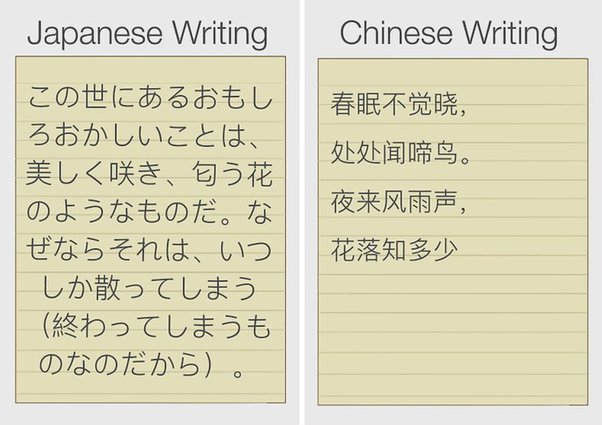Have you ever been watching a film or TV show that includes someone speaking in a foreign language you don’t know? As you are reading the on-screen subtitles, you wonder: what language is that?!
Every language has its own characteristics – that’s what makes them so fascinating to study. Different sounds, speaking rhythms, intonation patterns – these can often be signposts to sleuthing out what language someone is speaking. For example, French has a lot of nasal sounds which are quite distinctive if you’ve ever heard it being spoken (a good white wine, or un bon vin blanc is a good example of this), while Japanese tends to carry a flat intonation and yet still manages to sound very expressive and emotive.
These observations are obviously quite vague and telling languages apart by ear can be tough. What about when a language is written, then? Is this easier? Many languages boast unique symbols, characters, alphabets, or accents that are useful in decoding the written words and the language that they belong to, so it can be easier to pinpoint what is what you see it written down visually.
This article will introduce you to some general tips and clues to start sleuthing out those sentences. With all the languages that we could have written about and the thousands of nuances between them, only a fraction of them are mentioned in this article. Stay tuned for a part two in the future!
Uniquely Greek
The Greek language is the only language that uses the Greek alphabet. It’s easy to recognise Greek once you know what to look for. It’s highly likely that you will have come across some Greek letters if you have some experience in studying maths of physics, as these letters are often used for notation sake. Some of these may be beta β, theta θ, mu μ, and pi π.

Greek writing on the Rosetta Stone.
Interestingly, all the letters are capitals, which is common in much Greek writing.
The letters ř and ů
This special accented ř can be found in several languages. One of these is Upper Sorbian – a minority language with around 13,000 native speakers that is spoken in the Upper Lusatia province of Germany. Some Kurdish languages (spoken in Kurdistan in Western Asia) also use this ř, however only when they are written in the Latin script – Kurdish languages are usually written in Kurdish script.
If you had to take a wild and educated guess about this letter, it’s most probably going to be Czech you’re seeing. You could double check by looking for a particular letter that is present only in Czech – ů. If you’ve spotted an ř, then look afterwards for a U with an overring accent to confirm your suspicions!
Polish up your Polish
Polish is quite a distinctive looking language. When you spy a crossed out L (Ł or ł) and a Z with a dot on top (Ż or ż), you can put your złoty* on the fact that it’s probably going to be Polish. While these letters belong to alphabets of other languages as well (Ł can be found in the Sorbian alphabet with the ř mentioned above, and Ż exists in Maltese among others), it’s more likely to be Polish due to the amount of speakers and prominence of the language worldwide.
*Złoty is the currency of Poland – ł is pronounced like an English W and so sounds like zwoti.)
Portugese or Spanish?
These neighbouring languages are similar looking and sounding and so are sometimes confused with each other. However, it is not hard to tell them apart once you know what you are looking for.
If you see an A with a tilde accent (ã, like in São Paolo), the language is Portuguese. Spanish doesn’t use this letter in its alphabet and so you can be sure of this one! Another letter with a tilde accent is ñ – this one is only present in Spanish so look out for it. You can remember this by thinking the word Spanish contains an n, just like the Spanish only ñ.
Spanish and Portuguese aren’t the only languages that make use of Ã/ã and Ñ/ ñ, but perhaps they are the most commonly known which can help you make an educated guess based on context.
Additionally, the letter Y is not very common in Portugese, whereas it is seen very often in Spanish. Y in Spanish means and, so the presence of this small word can be a tell-tale sign.
Chinese, Japanese, Korean
These three beautiful Asian languages may be thought to be very similar, but their writing systems are actually very different.
First, let’s look at Korean. You might notice that Korean writing (called hangul) all looks quite square and blocky – this is because each “block” is made up of smaller characters, which are actually the individual sounds of the words. Korean letters are all very simple lines (ㄷ ㄹ ㅁ ㅂㅏ ㅑ) and one of the most recognisable characters is this little circle: ㅇ
Look out for this letter to recognise Korean – you can find it in the picture of hangul below.

The Korean writing system, hangul.
You can see several instances of the ㅇ mentioned above.
Whilst Japanese and Chinese are a little harder to tell apart, all you need to do is look for this little guy: の
This letter (pronounced noh in English) is very common in Japanese, but non-existent in Chinese. Every Chinese character is also very detailed with lots of strokes, whereas some Japanese characters are simpler and more “swishy” looking. If you can’t see の for example, some other curly Japanese-only characters to keep your eyes peeled for are those like tsu つ, shi し,or nu ぬ.
What makes things harder in telling Japanese and Chinese apart is that there are also Chinese characters used in Japanese! Chinese characters are arguably the most complex “alphabet” of the trio – you can see from the comparison below that Chinese is shorter, and each character is more detailed than those in Japanese.

Comparison of Japanese and Chinese writing systems. Note the Japanese on the left is more curly and “airy”, whereas Chinese is more compact and complex.
So, if you see a ㅇ, guess Korean. If each character seems to have lots of strokes then go for Chinese, and if there’s some complex characters mixed in with some curly looking ones, then your best bet would be to say Japanese.
Bonus tip: Japanese full stops and commas are different to Western punctuation! Commas in Japanese are backwards 、whilst full stops are little circles 。
From this small selection of languages you can start to see that once you start to dissect a writing system, you will start to notice its unique characteristics and be able to figure out what makes each language different. Whilst these tips are not comprehensive for sleuthing out which language is which, it is still interesting to be aware of differences and similarities in our written words.




